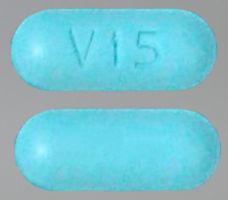Acetaminophen PM Extra Strength Interactions
There are 561 drugs known to interact with Acetaminophen PM Extra Strength (acetaminophen / diphenhydramine), along with 11 disease interactions, and 2 alcohol/food interactions. Of the total drug interactions, 23 are major, 523 are moderate, and 15 are minor.
- View all 561 medications that may interact with Acetaminophen PM Extra Strength
- View Acetaminophen PM Extra Strength alcohol/food interactions (2)
- View Acetaminophen PM Extra Strength disease interactions (11)
Most frequently checked interactions
View interaction reports for Acetaminophen PM Extra Strength (acetaminophen / diphenhydramine) and the medicines listed below.
- acetaminophen
- amlodipine
- aspirin
- Aspirin Low Strength (aspirin)
- atorvastatin
- carvedilol
- clonazepam
- cyclobenzaprine
- Fish Oil (omega-3 polyunsaturated fatty acids)
- furosemide
- gabapentin
- hydrochlorothiazide
- ibuprofen
- levothyroxine
- lisinopril
- losartan
- magnesium oxide
- melatonin
- metformin
- multivitamin
- omeprazole
- oxycodone
- pantoprazole
- prednisone
- simvastatin
- tramadol
- trazodone
- Vitamin B12 (cyanocobalamin)
- Vitamin C (ascorbic acid)
- Vitamin D3 (cholecalciferol)
Acetaminophen PM Extra Strength alcohol/food interactions
There are 2 alcohol/food interactions with Acetaminophen PM Extra Strength (acetaminophen / diphenhydramine).
Acetaminophen PM Extra Strength disease interactions
There are 11 disease interactions with Acetaminophen PM Extra Strength (acetaminophen / diphenhydramine) which include:
- alcoholism
- liver disease
- depression
- PKU
- anticholinergic effects
- asthma/COPD
- cardiovascular
- renal/liver disease
- glaucoma
- liver disease
- resp depression
More about Acetaminophen PM Extra Strength (acetaminophen / diphenhydramine)
- Compare alternatives
- Reviews (1)
- Drug images
- Side effects
- Dosage information
- During pregnancy
- Drug class: analgesic combinations
Related treatment guides
Drug Interaction Classification
| Highly clinically significant. Avoid combinations; the risk of the interaction outweighs the benefit. | |
| Moderately clinically significant. Usually avoid combinations; use it only under special circumstances. | |
| Minimally clinically significant. Minimize risk; assess risk and consider an alternative drug, take steps to circumvent the interaction risk and/or institute a monitoring plan. | |
| No interaction information available. |
See also:
Further information
Always consult your healthcare provider to ensure the information displayed on this page applies to your personal circumstances.


